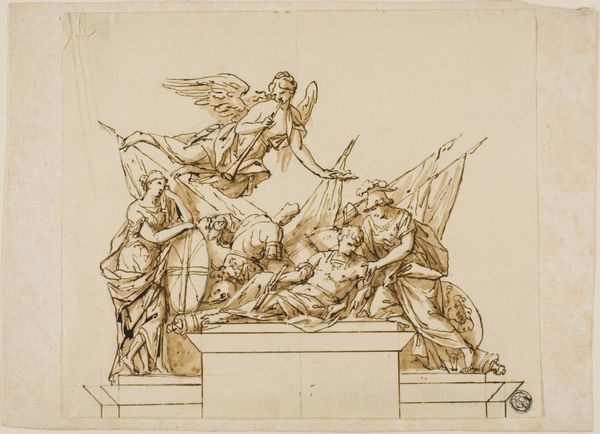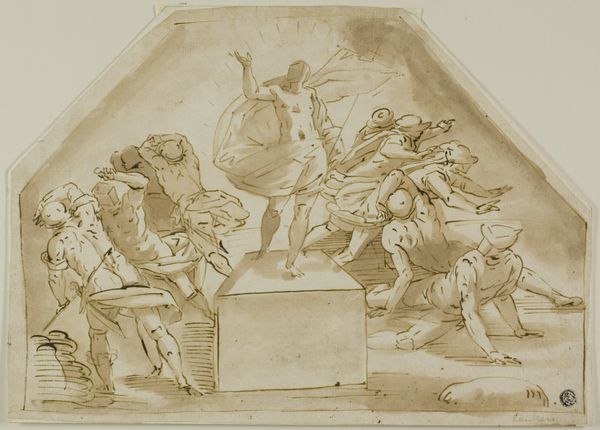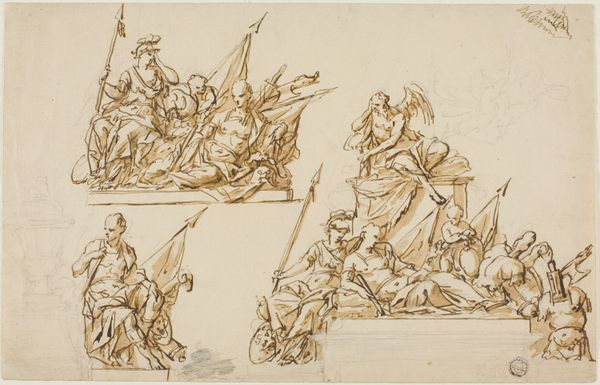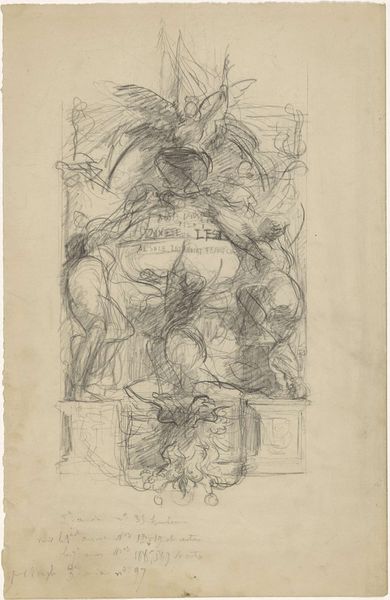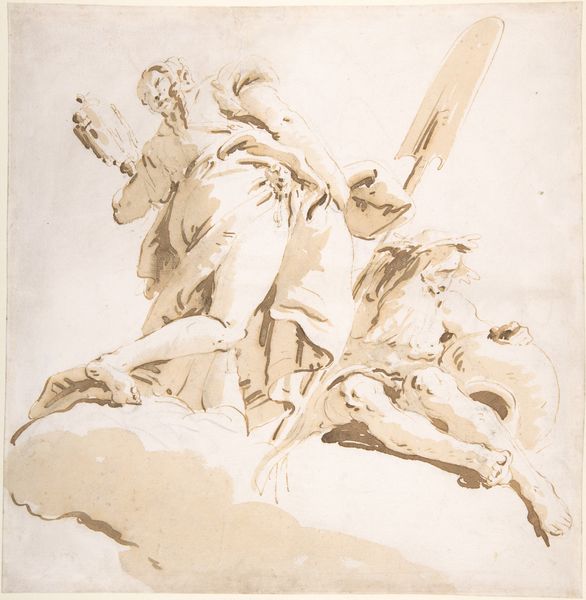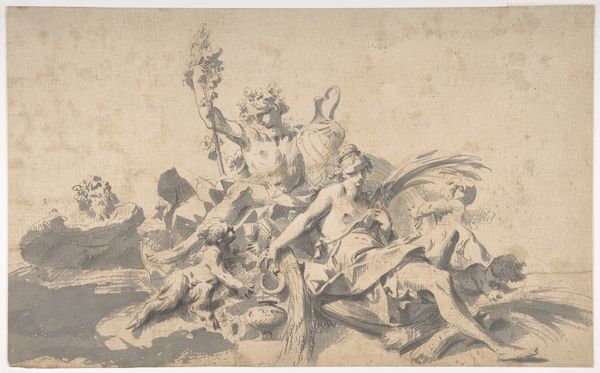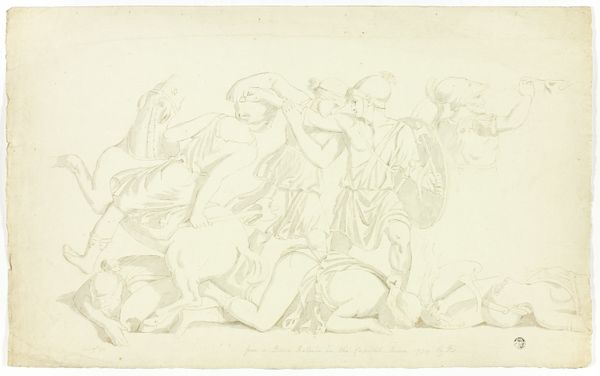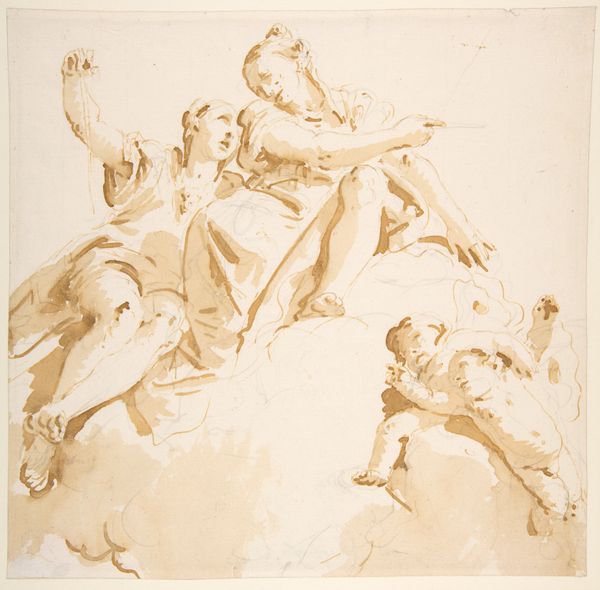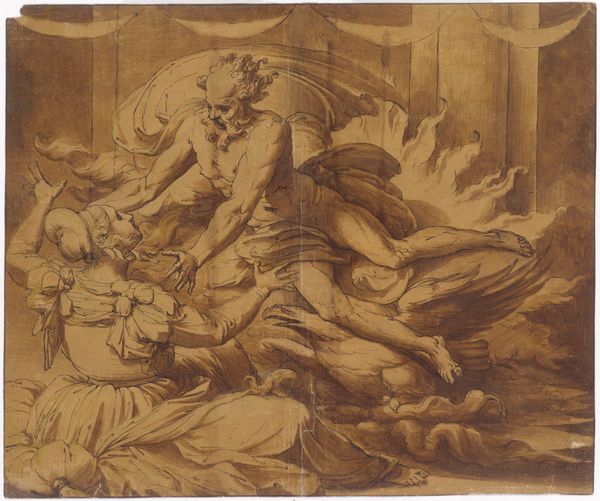
Warrior Accompanied by Britannia, Minerva, and Fame (recto); Design for the Monument to Nicholas Rowe (verso) c. 1733 - 1740
0:00
0:00
drawing, print, paper, ink, chalk, graphite, pen
#
drawing
#
ink drawing
#
allegory
#
baroque
# print
#
etching
#
paper
#
ink
#
pen-ink sketch
#
chalk
#
graphite
#
pen
#
history-painting
#
academic-art
Dimensions: 204 × 226 mm
Copyright: Public Domain
Curator: The artwork before us, a drawing held at The Art Institute of Chicago, is titled "Warrior Accompanied by Britannia, Minerva, and Fame," with a related sketch on the reverse. John Michael Rysbrack created this around 1733-1740. Editor: My immediate sense is one of somber grandeur, a potent blend of strength and mourning rendered in these layered ink washes and chalk details. The pyramidal composition draws my eye upwards, yet the subdued palette evokes a contemplative mood. Curator: Precisely! Rysbrack, a Flemish sculptor active in England, designed this drawing as a preparatory study for a monument. Note the strategic placement of figures like Britannia and Minerva around the fallen warrior. We observe, at the pinnacle, Fame who signifies triumph, not just of his military accomplishments, but also perhaps of the British empire. Editor: But triumph over whom, and at what cost? This scene speaks to the glorification of military endeavors that mask their violent realities. Consider Britannia herself. While representing Britain, she is still part of the story built on colonialism. Minerva's association with strategic warfare cannot be overlooked, either. Are they mourning loss or solidifying power? Curator: A valid point. But observe how Rysbrack balances allegorical representation with formal restraint. The intricate linework, coupled with the monument's architectural clarity, creates a striking harmony. He clearly understands Baroque principles, infusing it with Neoclassical restraint. The play of light and shadow generates palpable depth within the monochromatic medium. Editor: While visually captivating, let's remember these "triumphs" were rooted in socio-political control. Art served a propagandistic function then, justifying hierarchical systems and shaping collective memory. It is hard to ignore the lack of counter-narratives presented to the viewer through the intentional myth-making and idealization within the work. Curator: It highlights the way aesthetics intersect with ideology, which ultimately helps us look closer. Rysbrack encourages visual investigation through precise delineation and dramatic arrangement. The artist masterfully depicts an abstract monument concept using simple ink on paper. Editor: Reflecting on it, the piece offers not just a glimpse into 18th-century artistic skill, but also provokes reflection on the ever-shifting terrain of history, memory, and artistic intent, while at the same time serving as a reminder of its possible cultural biases.
Comments
No comments
Be the first to comment and join the conversation on the ultimate creative platform.
